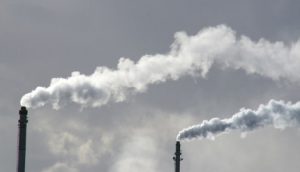Over the past 12 months, leading Chinese municipalities such as Beijing, Tianjin, Shanghai and Shenzhen have been gearing up to run carbon-trading trials. These pilots imposed by the state planning body are intended to help China deal with the dilemma of decoupling emissions from growth in the face of escalating pollution and resource scarcity.
What is noteworthy here is that these pilots include areas designated as Special Economic Zones (SEZs). This is interesting because the past three years have seen a remarkable rise in interest among local authorities in the practice of low carbon SEZs. International examples range from marine energy in Humberside in the UK through to water treatment in the US city of Milwaukee.
In China, examples include the cities of Baoding and Jilin.
Boading now has 20,000 people employed in clean energy, for example through solar-panel production, which generates US$7.2 billion per annum and is expected to grow 30% by 2016. Jilin has set a new roadmap that will prioritise investment in renewable energy generation in the form of hydro, biomass and wind up to 2020.
Mixed success for SEZs
An SEZ is a geographically defined area offering certain incentives, such as tax breaks or grants, to businesses that physically locate within the zone. The SEZ is usually one part of an overall economic growth strategy aimed at enhancing the competitiveness of manufacturers and service providers. It is also intended to realise agglomeration benefits from concentrating industries in one geographical area – for example, efficiencies in government supervision of enterprises, provision of off-site infrastructure, improved environmental controls and increased supply and sub-contracting relationships among industries.
The UK is credited with coming up with the idea for the “modern” version in the 1970s as a way of overcoming pockets of economic blight. According to the World Bank, by 2007 there were some 160 SEZs in operation across Australia, France, Malta and the UK alone.
Evidence to support the case for SEZ policy is mixed, however, suggesting it can contribute more to innovation than development. A study of US experiencefound that states were generally not successful in raising levels of economic activity in this way: the zones had a positive impact on the creation of new establishments and a negative impact on previously existing establishments.
This contrasts sharply with the Chinese experience: through special trading arrangements which allowed and encouraged foreign direct investment,
Shenzhen, for instance, was transformed from a small town with no basis for economic development into a huge and modern economic centre that has influenced the development of the whole Pearl River Delta region. The Chinese experience is not one of total success however: the SEZ in Hainan, an island off the south Chinese coast and the country’s smallest province, is considered a failure, due to a lack of a clear definition of the aims, insufficient control of the procedures and corruption.
Given the Shenzhen SEZ success story, it is perhaps not surprising that the same idea is being applied to the low carbon agenda. Cities appear to be using low-carbon SEZs for one or a number of reasons. This ranges from raising GDP per capita by attracting investment with a higher skilled technology workforce and regenerating areas suffering from high unemployment through to implementing emissions controls that reduce the incidence of fossil-fuel dependent activities and boosting local resiliency by providing greater energy or water security.
There is no universal standard for a low carbon SEZ, and as such, their definition and implementation differs from region to region. Low carbon SEZ policy interventions range from offering financial incentives for low-carbon manufacturers to re-locate to a defined area through to imposing low-emission building regulations in this area. A particular low carbon SEZ policy is shaped as much by the motivation to act as it is by local or national strategy, and which may change over time: at present, China’s primary motivation to act is to ensure its competitiveness is not hindered by a dependency on unsustainable levels of fossil-fuel consumption. By comparison, the UK’s primary motivation is kick-starting economic recovery and tackling areas of economic blight.
Low-carbon SEZs: a contradiction in terms?
Given the successes and failures of previous SEZ schemes, it is crucial to understand what a city might gain and what it might lose from a modern SEZ programme, whether it is carbon-centric or not. Does it lead to an increase in national or regional GDP but not necessarily contribute to local poverty alleviation? If so, do additional provisions need to be put in place to ensure this happens, such as requiring relocating businesses to hire local apprentices or use local supply chains?
From a non socio-economic perspective, there may be inherent contradictions for a low carbon SEZ or low carbon city, between unabated growth and abated emissions. In Baoding for instance, the economic boom from the solar panel industry means its carbon intensity is much higher than peer city equivalents, hence the Chinese government re-calibrating its approach and imposing new carbon-trading pilots. There are also limitations on what a city can do by itself. UN-Habitat argues that a national strategy for low carbon SEZs is vital to ensure clusters are appropriately selected, complimentary, build trust and avoid unnecessary competition.
If we want to go “back to the future” and use SEZ policy as force for good, the concept needs a reboot to ensure it delivers low-carbon industry that benefits neighbouring communities.
Philip Monaghan is founder and chief executive of Infrangilis, a consultancy and think-tank on resiliency strategies. He is the author of Sustainability in Austerity
(2010) and How Local Resilience Creates Sustainable Societies
(2012).





